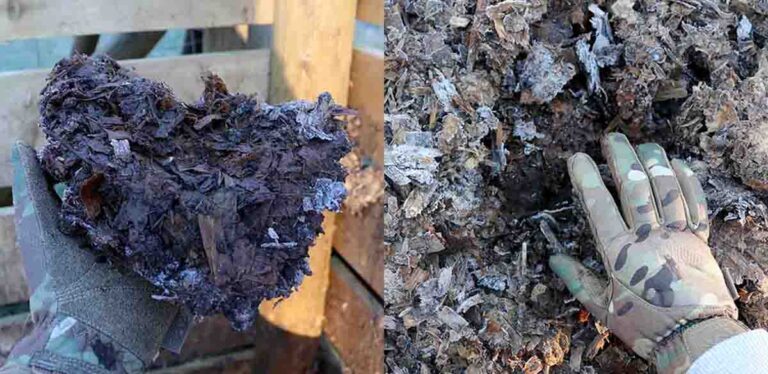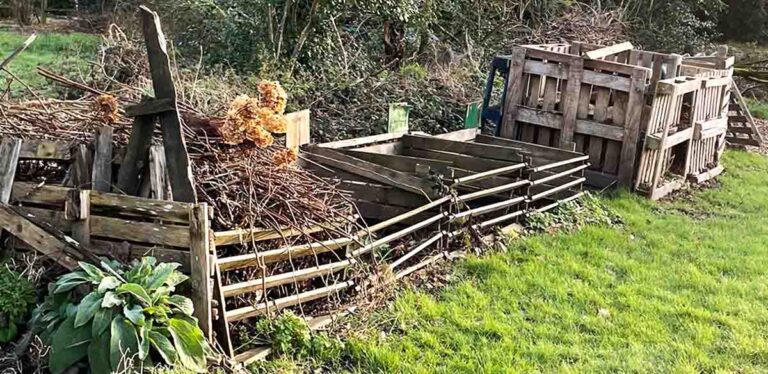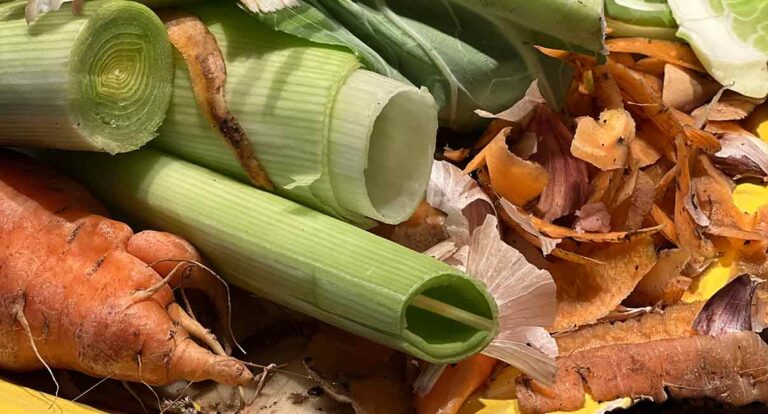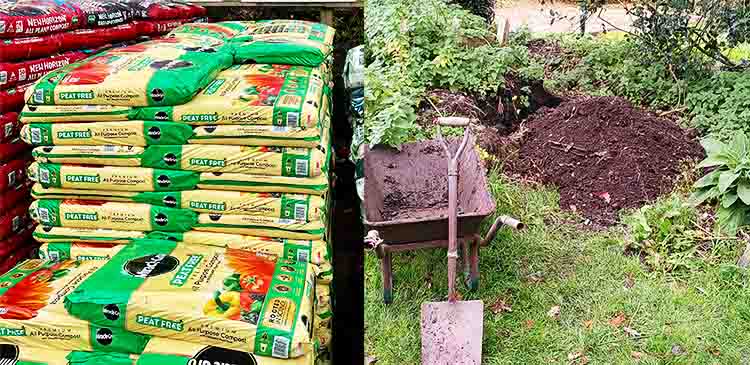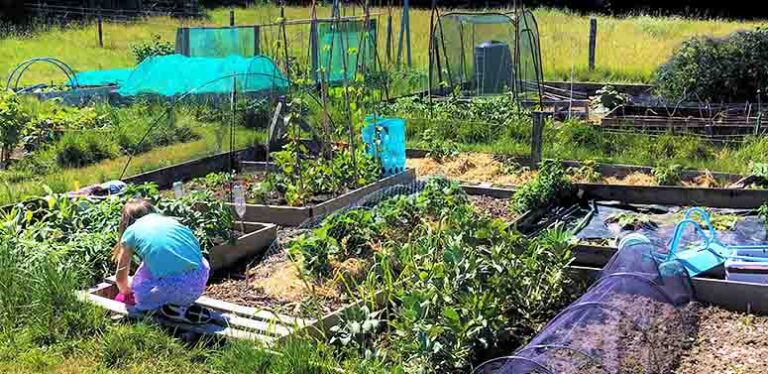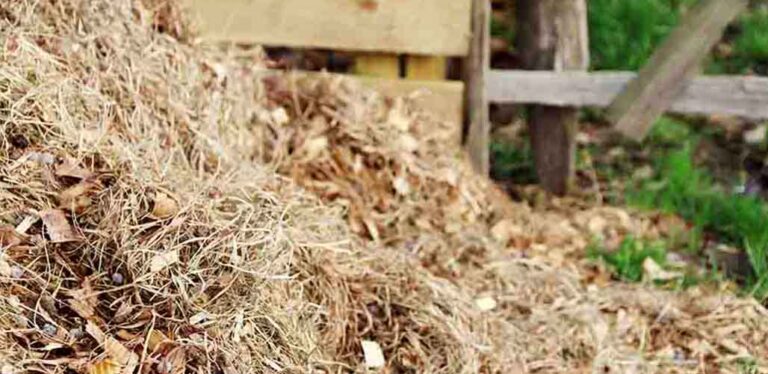Why Does My Compost Pile Smell So Bad?
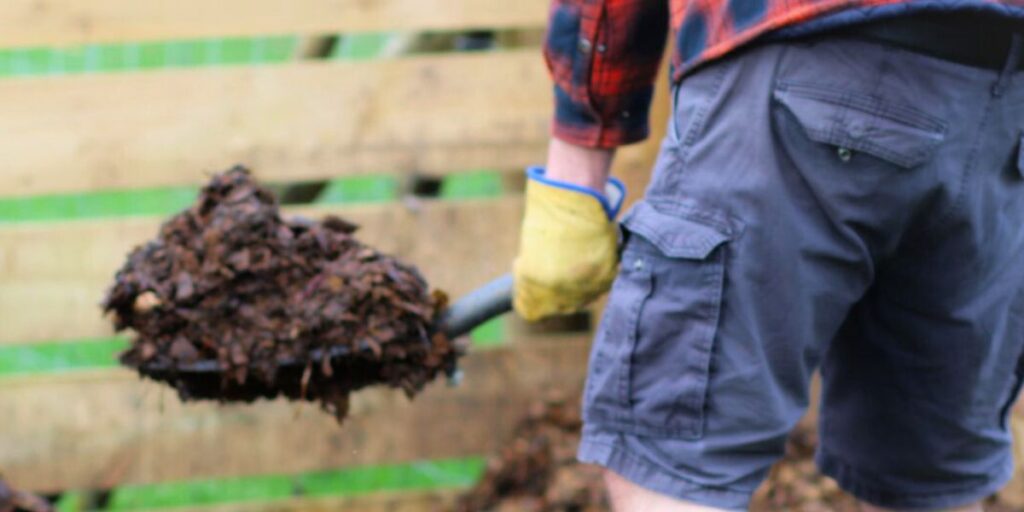
A healthy, efficient compost pile should have very little odor. And the finished compost should smell sweet and earthy when you dig it out. If your pile has a nasty smell that hits you before you even get close, it’s a reliable sign that the contents aren’t breaking down like they should be either. Here’s a simple explanation of the imbalances in a compost heap that cause bad smells to be released, and how to neutralize them.
Why does my compost pile smell so bad
Despite being centered around decay, the composting process shouldn’t actually smell bad. A compost pile that’s still breaking down should have very little odor, and finished compost should smell pleasant – like being in a forest. If your compost pile smells bad the most likely reason is that one of the three requirements for healthy composting is out of balance. Healthy composting requires:
- The right ratio of available carbon and nitrogen
- Oxygen
- Water
Changes in the balance of these ingredients also change which types of bacteria will flourish in your pile. And whether the contents are being broken down through aerobic or anaerobic digestion.
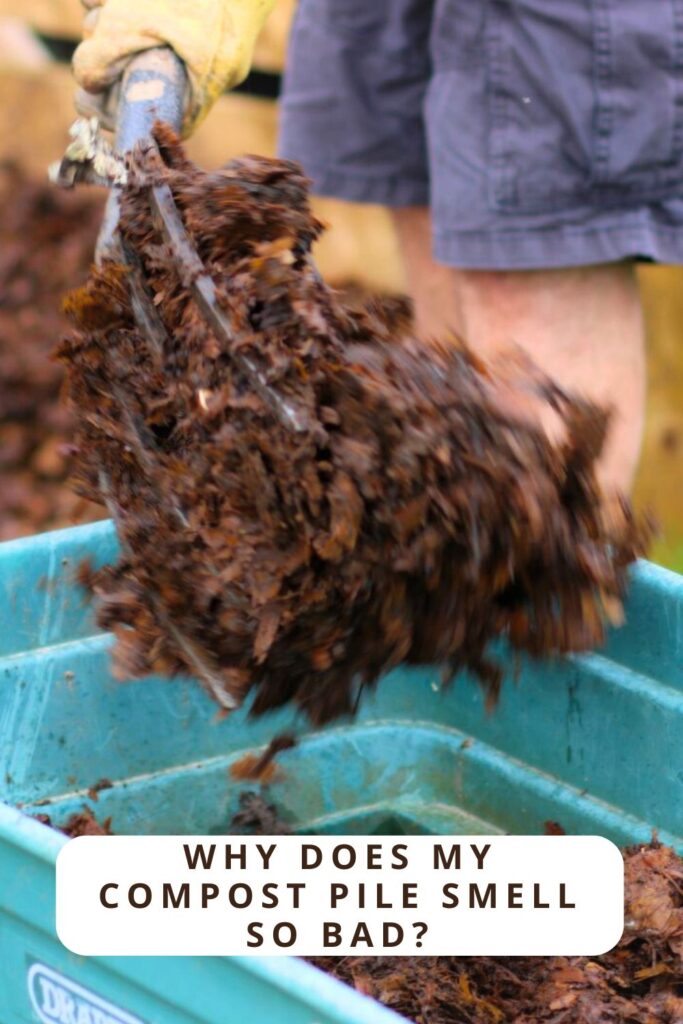
Aerobic vs anaerobic digestion
Inside your compost pile, the hard work of turning your compostable materials into actual compost is being carried out by billions of bacteria. They digest their way through your kitchen scraps and everything else, taking the carbon for energy and the nitrogen for growth and reproduction.
Ideally, your compost heap will be populated by aerobic bacteria. Aerobic simply means ‘working with oxygen’. Aerobic bacteria turn oxygen from the air and carbon from the contents of your composter into energy for themselves, and carbon dioxide. Compost is the waste material they leave behind.
Aerobic bacteria rely on oxygen from the air to function. If your compost pile doesn’t contain enough air for them, they will be replaced by anaerobic bacteria. Anaerobic bacteria still need oxygen, but they don’t need to get it from the air. They can extract it from the material on your compost heap instead. So they take both carbon and oxygen from the material on your compost pile, and turn it into
- Energy
- Carbon dioxide
- Methane
- Hydrogen sulfide
They also convert the nitrogen from your compost materials into ammonia. Methane, hydrogen sulfide and ammonia all smell terrible.
Why isn’t there enough air in your pile for the aerobic bacteria?
Gassy anaerobic bacteria take over from mild-smelling aerobic bacteria when there isn’t enough air in your pile to support the aerobic bacteria. This could be because:
- There are too many green materials, relative to brown materials. Green materials tend to be softer, wetter and disintegrate into mush as they break down. Brown materials are drier, and stay ‘bulky’ as they break down. When there are too many green materials, and not enough brown materials to give your compost structure, you tend to end up with a dense, slimy mat of half-decomposed material, which air can’t penetrate.
- The contents are too wet, and water has filled the air pockets in your composter, especially near the bottom.
- Your pile is too deep, and the material at the top has squashed the material at the bottom, so there are no gaps for air to circulate through.
Fixing a smelly compost pile
So, bad smells are the result of anaerobic bacteria taking over your compost pile. Happily, getting rid of those smells is as simple as restoring the right balance of carbon, nitrogen, oxygen and water for aerobic bacteria to reclaim it.
Step 1
Gather lots of brown materials. Brown materials are:
- Dead, dry leaves
- Torn and scrunched up paper from newspapers and paper bags (but not glossy magazines or gift wrap)
- Shredded cardboard from packing boxes, pizza boxes, etc. Extra points for corrugated cardboard, because it’s construction is excellent for creating air pockets in your new compost pile.
- Wood shavings
- Straw – if you don’t have a ready supply of anything else on this list, bales of straw can be bought cheaply at pet stores, farm supply stores, and some garden centers.
Step 2
You’re going to reconstruct your pile incorporating the brown materials, so first you need to decide where. If you can build it right next to the spot your current pile is in, that’s great. But if you want to reconstruct it in the same place it is now, then the first step is to pull all of the contents out, ready to start again. If your compost’s current location is at the bottom of a slope, or on a hard surface, you might want to consider moving it uphill, or onto bare earth at this point, to improve drainage.
Step 3
Rebuild your compost heap using your brown materials and the contents of your old compost pile. If you had problems with drainage before, and you have access to sticks and small branches leftover from cutting back trees and shrubs in your yard, start with those at the bottom of the pile to create drainage (a wooden pallet is another option!) Now add the smelly contents of your old heap and your new brown materials in thin, equal layers.

The new brown materials will absorb the excess liquid in your old compost, and create structure and air pockets in your new pile.
Step 4 (optional)
If you’re expecting a lot of wet weather in the coming weeks, consider covering your pile with a tarp to prevent it getting waterlogged again.
Step 5
In two weeks’ time, pull everything back out of your compost bay, and then turn it all back in again. This will introduce yet more oxygen, and it also gives you another opportunity to assess what’s going on inside your pile, and whether to add more brown materials. If it’s gone a little too far in the other direction and feels dry, you might even need to add water. Your compost should feel damp but not dripping wet – like a wrung out dish cloth.
Don’t worry about small pockets of anaerobic digestion
No matter how carefully you measure out your green and brown materials, and arrange them in thin layers, small pockets of anaerobic fermentation are normal and par for the course. And to be honest, you probably shouldn’t worry about constructing your compost pile so meticulously that the likelihood of them occurring is the lowest it can possibly be. Life is too short!
Which does mean that when you dig over your compost pile, you might sometimes find a slimy corner, or get hit by a passing whiff of rotting eggs. But don’t worry. That’s one of the very reasons we dig over compost in the first place. Digging over redistributes soggy material that’s started fermenting, and introduces air pockets to support aerobic decomposition instead.
Why does my compost pile smell so bad? Summary
Composting material can start to smell bad if anaerobic bacteria start to take over from aerobic bacteria as the dominant microbes in your pile. Anaerobic bacteria can survive without air, but they release ammonia, methane, and hydrogen sulfide as by-products of breaking down organic matter. Getting rid of the odor is as simple as rebuilding your compost pile to incorporate more oxygen. Simply digging the contents out and re-stacking them will add oxygen, but adding more brown material will create air pockets, and also help soak up excess water.

